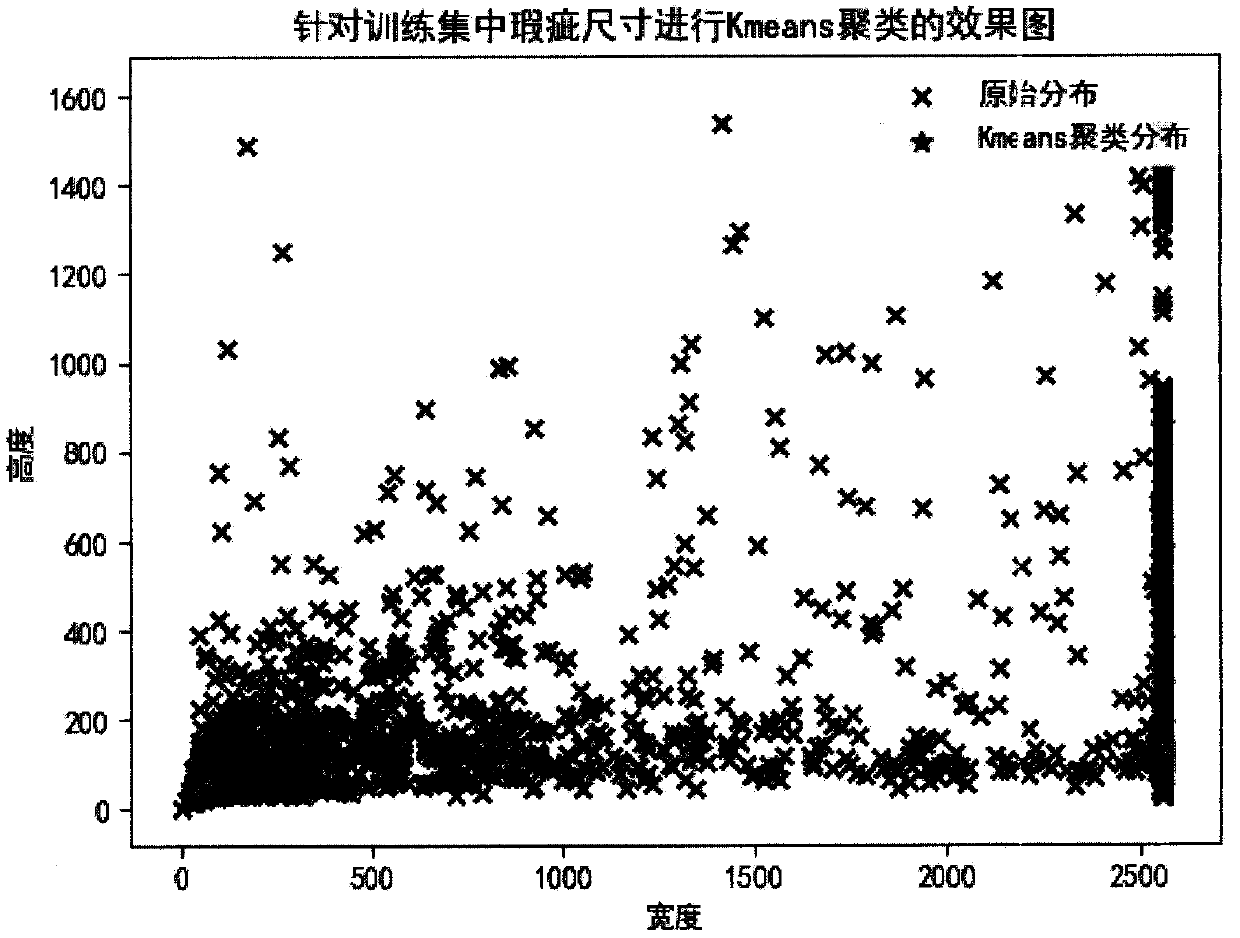An aluminum material surface defect detection algorithm based on deep learning
A defect detection and deep learning technology, which is applied in computing, computer parts, image analysis, etc., can solve the problems of large changes in the size and shape of aluminum surface defects, unsatisfactory detection performance of aluminum surface defects, etc.
- Summary
- Abstract
- Description
- Claims
- Application Information
AI Technical Summary
Problems solved by technology
Method used
Image
Examples
Embodiment Construction
[0048] The present invention is further described below.
[0049] Implementation process and examples of the present invention are as follows:
[0050] (1) Image collection, use the camera to shoot the surface of the aluminum material, obtain 5000 images and rename the images, such as 1.jpg, 2.jpg, 3.jpg, ..., 5000.jpg, etc., use the labelImg tool to shoot Annotate the image of the image to obtain the label of the defect in the image. The label of the defect includes the coordinates (x1, y1) of the upper left corner of the defect in the image, the coordinates (x2, y2) of the lower right corner of the image and the category of the defect defectN, where N represents Numbers, N ∈ {1, 2, 3, ..., 10}, respectively represent non-conductive, scratches, leaky corners, orange peel, and leaky bottoms. Jet streams, paint bubbles, pits, variegated colors, and dirty spots. In particular, if there are no defects in the captured image, we will not use labelImg to process it, and only record...
PUM
 Login to View More
Login to View More Abstract
Description
Claims
Application Information
 Login to View More
Login to View More - R&D
- Intellectual Property
- Life Sciences
- Materials
- Tech Scout
- Unparalleled Data Quality
- Higher Quality Content
- 60% Fewer Hallucinations
Browse by: Latest US Patents, China's latest patents, Technical Efficacy Thesaurus, Application Domain, Technology Topic, Popular Technical Reports.
© 2025 PatSnap. All rights reserved.Legal|Privacy policy|Modern Slavery Act Transparency Statement|Sitemap|About US| Contact US: help@patsnap.com



